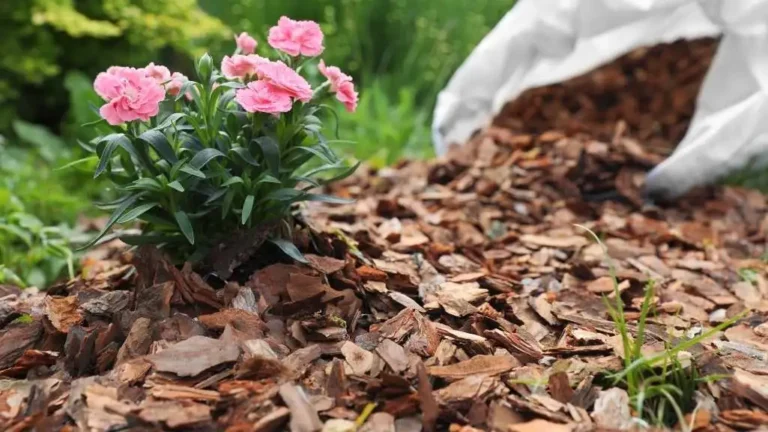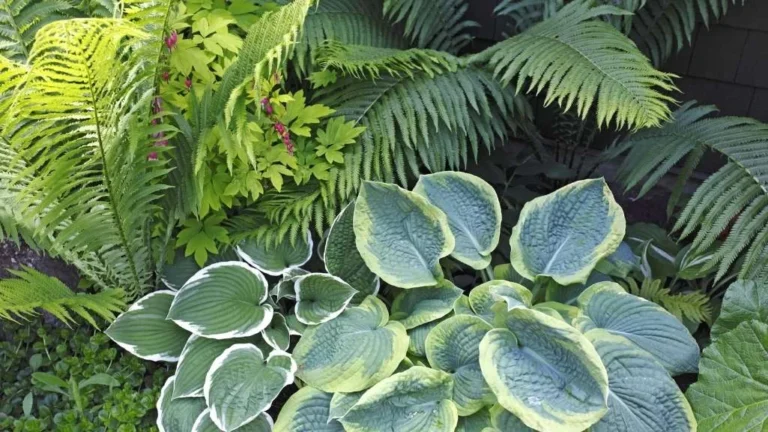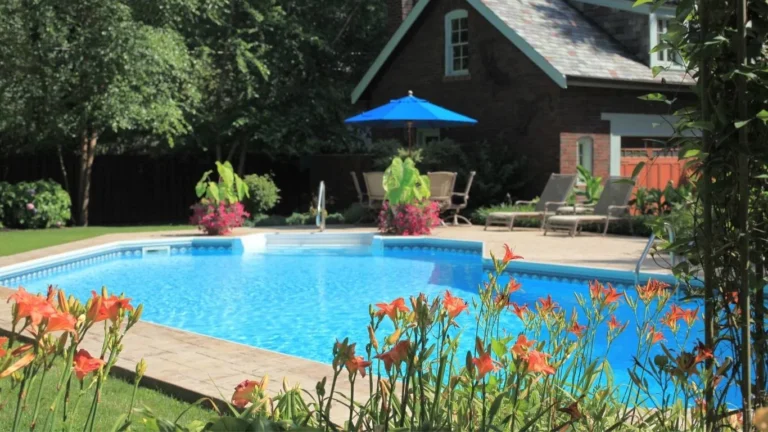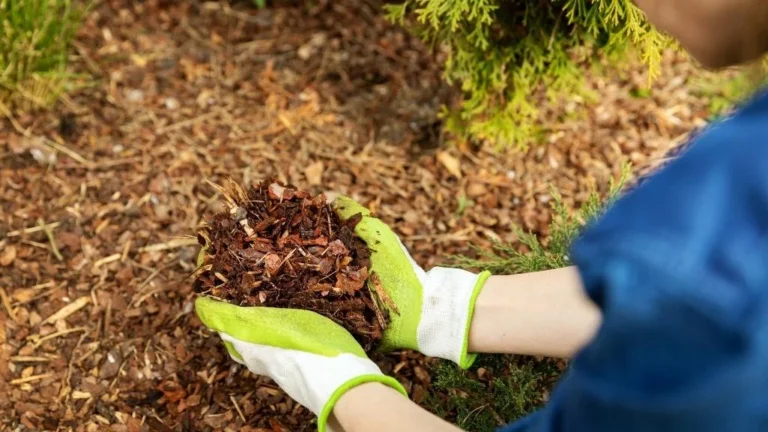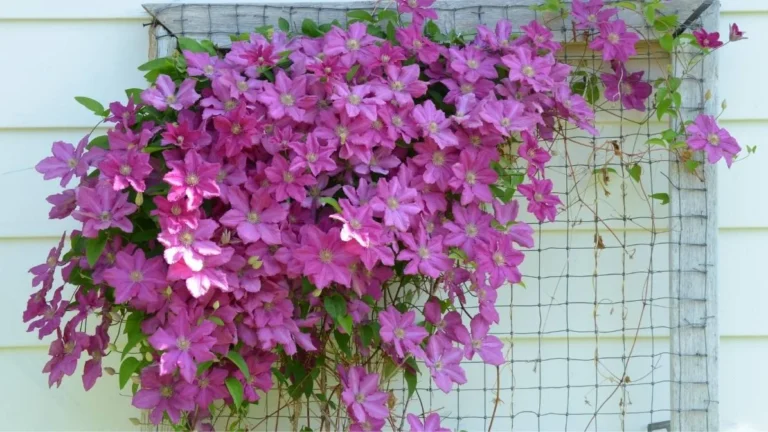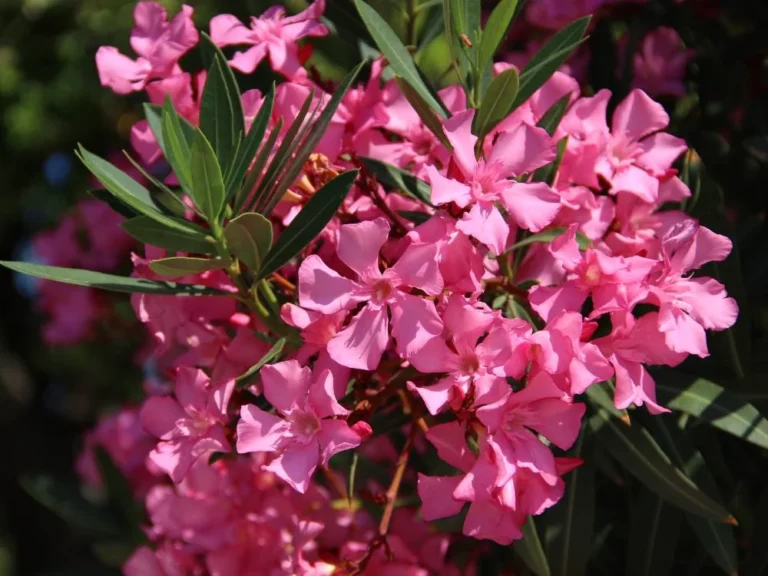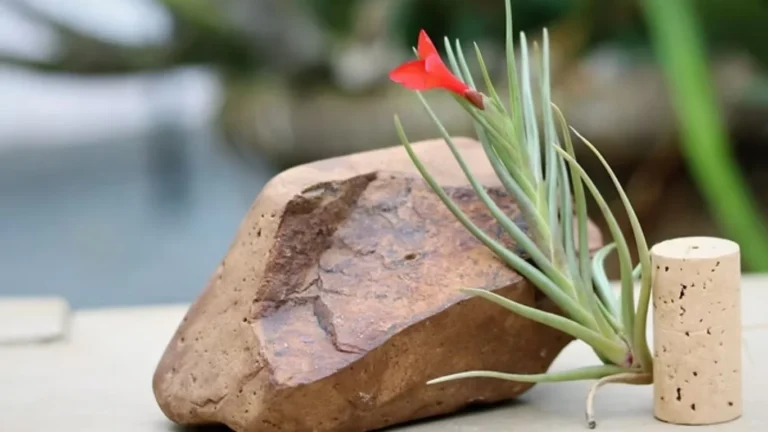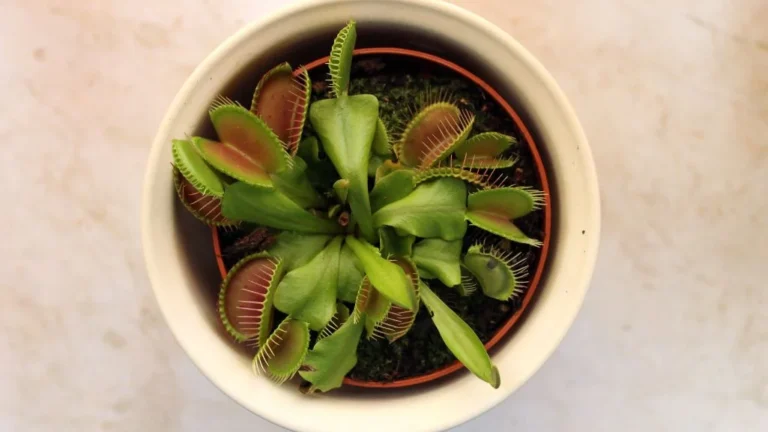Fiddle Leaf Fig Features
|
Scientific name |
Ficus lyrata |
|
Family |
Moraceae |
|
Common names |
Fiddle Leaf Fig, Ficus lyrata, FLF, Fiddle Fig, Ficus Pandurata, Banjo Fig, Lyre leaf Fig, Ficus Fiddle, Ficus Strangler Fig, African Fig |
|
Native |
Tropical rainforest of Sierra Leone, Liberia, Ivory Coast, Ghana, and Nigeria |
|
Hardiness Zone |
USDA zones 10 to 12 |
Caution: Fiddle leaf fig plant is toxic to pets and children.
Appearance
The Fiddle Leaf Fig (Ficus lyrata) has large, glossy, violin- or fiddle-shaped leaves. The leaves are dark green in color, with prominent veins running throughout. The plant grows upright with a single trunk and branches out as it matures. The leaves can grow up to 12-18 inches long and 8-10 inches wide, whereas with proper care, the plant can grow up to 6- 10 feet indoors.
Types of Fiddle-leaf Fig
Popular types of fiddle leaf fig include ficus lyrata bambino, ficus lyrata suncoast, ficus lyrata compacta, ficus lyrata variegata, ficus lyrata sabre, and ficus lyrata little sunshine.
Growing Conditions
Requirements for fiddle leaf fig at a glance
|
Elements |
Requirement |
|
light |
Bright indirect sunlight |
|
Temperature |
10°F to 85°F |
|
Humidity |
60-70% |
|
Soil pH |
6.0-7.0 |
|
soil mixture |
Moist as well as easy-to-dry |
|
container |
Ensure drainage holes |
|
Water |
When the top layer of the soil gets dried out |
|
Fertilizer |
Once a month during summer and spring |
Note: Soil pH level indicates how acidic or neutral the soil is. On a scale of 1 to 10, 7 means neutral. A pH value of less than 7 indicates more acidity and a pH value of more than 7 indicates more basicity. Fiddle leaf fig plant requires slightly acidic to neutral soil.
Soil Mixture
A well-drained potting mix is necessary for fiddle leaf fig plants. It also requires moist soil but not soggy soil. An ideal soil mixture contains potting soil, perlite or vermiculite, which helps the soil to dry out quickly, and coconut coir or moss, which will retain some moisture in the soil.
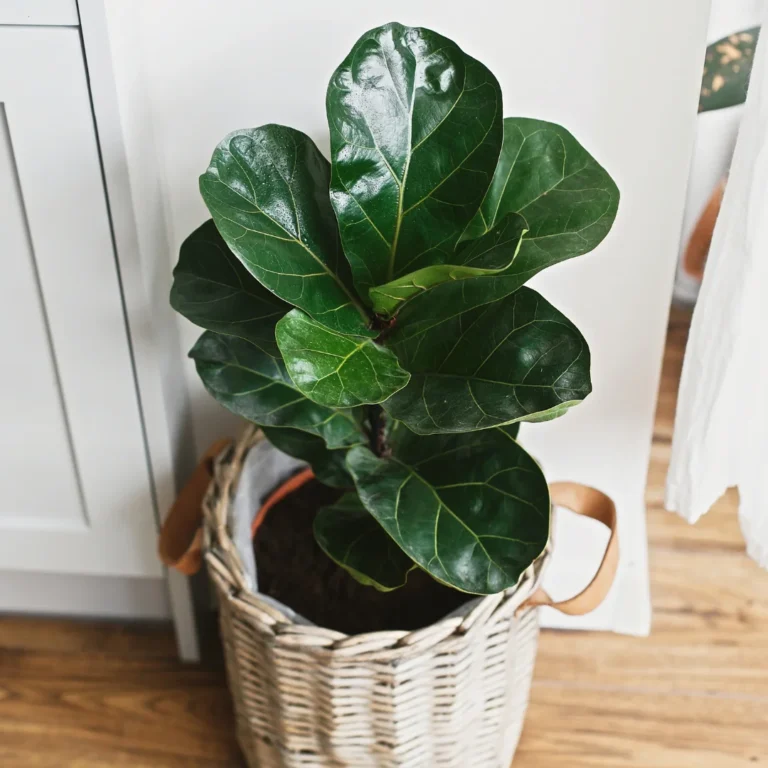

Container
Fiddle leaf figs cannot survive in soggy soil, so choose a container that has drainage holes under it. Choose a planter/container that is at least 2 inches bigger than the current root size. Don’t choose a big planter because a big planter holds excess soil, which retains excess water, which can lead to root rot. Fiddle leaf fig plants can be kept in any material container. I kept my plant in a nursery pot and put it into a lovely decorative pot. So, anyone can do that, too. Otherwise, this plant can be kept in terracotta or clay pots, which are porous and suitable for aeration.
Sunlight
Fiddle-leaf fig plant requires bright indirect sunlight. In an indoor environment, try to keep the plant beside a window where the plant gets at least 6-8 hours of bright indirect sunlight throughout the day. Avoid keeping it under direct sunlight; this can burn the plant’s leaves. On the other hand, keeping the plant low on light lessens its growth. If there is no bright light available in the house or in the winter season, grow lights are best. In low light conditions, the plant will survive but not thrive.
Water
Fiddle leaf fig is a tropical plant, so overwatering and underwatering harm this plant. Maintaining moist soil is essential. So, water the plant when the top half layer of the plant gets half dry. Use a moisture meter or do a finger dip test to check the soil’s moisture level. In the finger dip test case, water the plant if the soil doesn’t stick to the finger. While watering, ensure that every part of the soil absorbs water. Keep pouring water until water comes out of the drainage holes. Fiddle leaf fig requires humid environments like tropical areas. Investing in a humidifier is best to maintain 60-70% humidity. Misting can also be done to the leaves once or twice a week to maintain humidity.
Fertilizer
Fiddle-leaf fig plants do not require too much fertilizer. Fertilizing once a month in its growing period (spring and summer) is enough. A balanced, water-soluble fertilizer works best for this plant. Half the dose is written on the instructions. Avoid putting fertilizer in the plant’s dormant period, winter and fall.
Re-potting
Repotting means changing the plant’s existing container. Generally, repotting is done after buying a new plant, in case of root-bounding (when the roots come out of the drainage holes), when the current potting mix is too old to have sufficient nutrition or any trace of pests in the soil. In the case of fiddle leaf fig, plant repotting is once a year. The plant should be repotted when the roots become visible from the top of the soil.
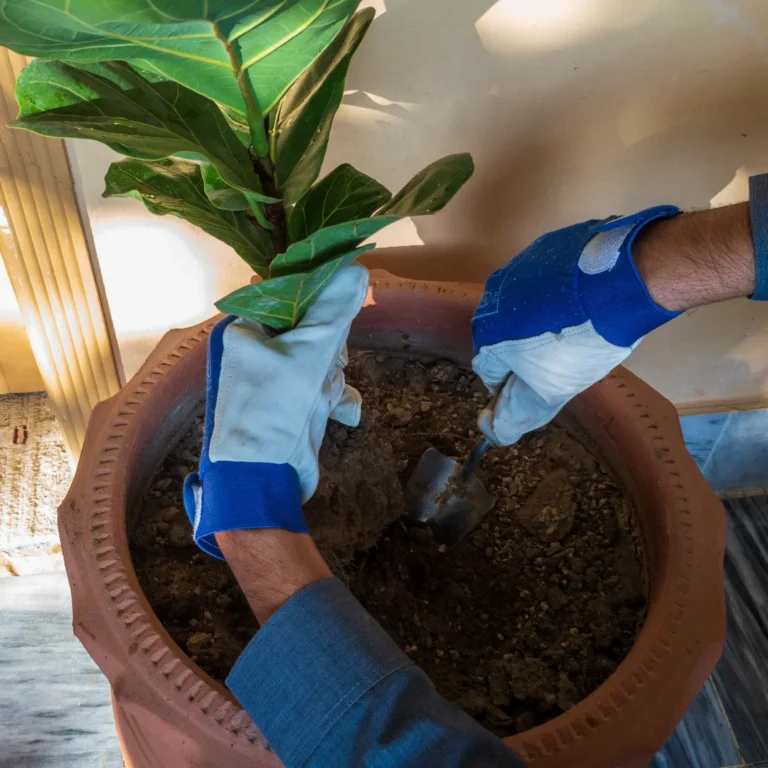

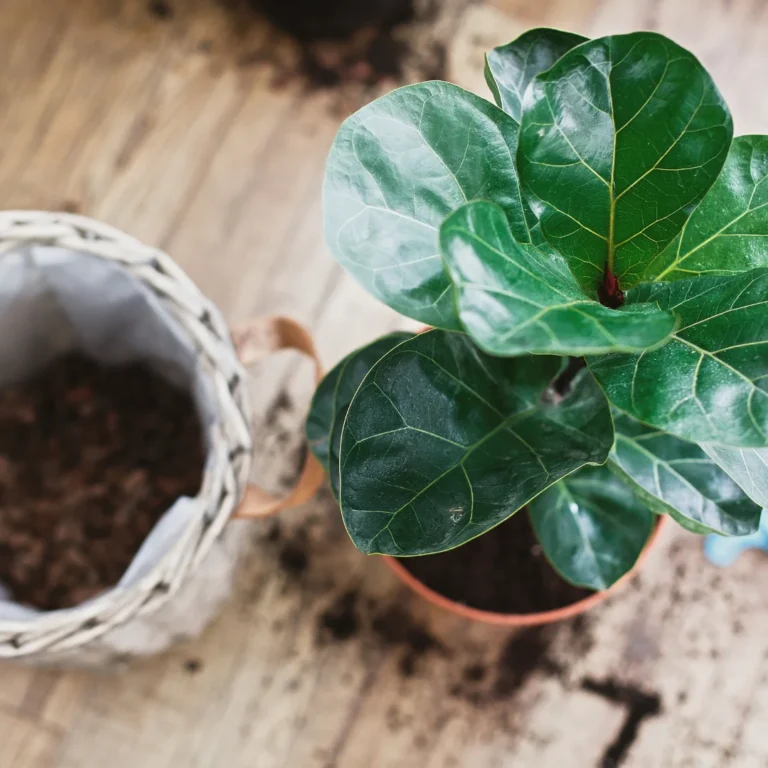
Pruning
Almost every houseplant requires pruning to thrive and to be in good shape. It’s the same for the fiddle leaf fig. Firstly, yellow, brown, dried leaves must be removed. Secondly, it is used to increase the growth of the plant. The plant’s development may be stunted without pruning for a long time. Lastly, if the plant is getting leggy shape or wants to maintain a good shape of the plant, pruning is done.
Pest
Fiddle leaf figs can be attacked by pests in both indoor and outdoor environments. The common pests that may attack the plant are mealy bugs, spider mites, aphids, and fungus gnats.
Things to do when you see any pests:
- Immediately separate the plant from other plants.
- For mealy bugs, spider mites, and aphids, spray the plant with neem oil or insecticidal soap and wipe the insects.
- In the case of fungus, gnats repot the plant.
Other Common Issues
- Leaf yellowing is a sign of overwatering, root rot, or being attacked by pests. If 2/3 leaves from the bottom get discolored, then it’s okay. However, discoloration is seen in many leaves, so it’s a matter of concern. Check for watering routine, pest attacks, fungus gnats, and inspect the roots. If the roots get mushy and brownish, then immediate repotting is done.
- The plant is dropping all of its leaves. It is a sign of overwatering or underwatering. When the leaf dropping starts from the lower portion of the plant, then it’s more likely overwater. On the other hand, if all the leaves from top to bottom drop, it’s a sign of under-watering. So, in this case, fix the watering routine.
- A reddish spot on the leaves, known as edema, happens when there is too much water retained in the cells of the plant and that spreads to the leaves. So, this is a sign of overwatering. In this case, check out the water routine and dry soil before watering.
- Brown edges are a sign of underwatering or sunburn.
- Black or purple spots on the plant indicate excessive cold contact with the plant. In that case, maintain a perfect temperature.
- Small leaves and stunted and leggy growth are signs of less light and nutrition deficiency. If the plant is not a dwarf of ficus such as ficus lyrata Bambino, then the above-mentioned signs are concerning. Keep the plant where it gets 4-6 hours of bright indirect sunlight and provide fertilization from time to time.
Propagation
Fiddle leaf fig propagation is an easy process. In the case of propagation, one must be careful about the season; fiddle leaf fig must not be put for propagation in winter and fall seasons. The propagation process is done in late spring and summer. Fiddle leaf fig can propagated from stem cutting. The process is as follows.
- First, choose a healthy mother plant that has no problem with it.
- Carefully cut the stem at a 45-degree angle from the upper side of the plant (as the chance of propagation increases with the young stem) with a sterilized blade or knife.
- Remove the leaves from the lower portion of the cutting, keeping 3-4 leaves with it.
- Dip the cutting in the rooting hormone, accelerating the rooting process.
- Then, put the cutting into a container filled with fresh room-temperature water.
- Keep the jar in a bright place, and change the water every 7-10 days.
- Once the new root grows 2-3 inches, place it in the soil.
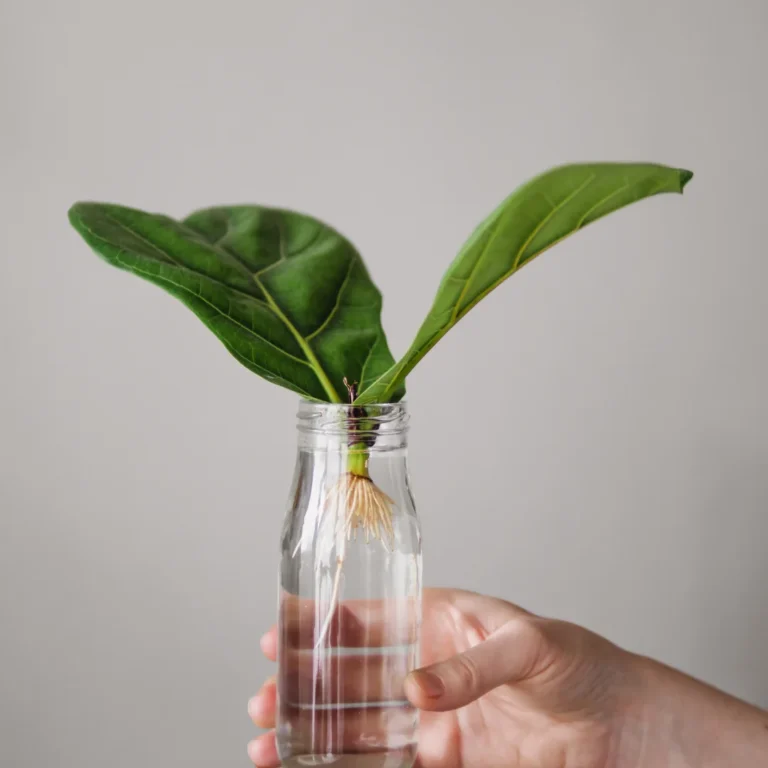
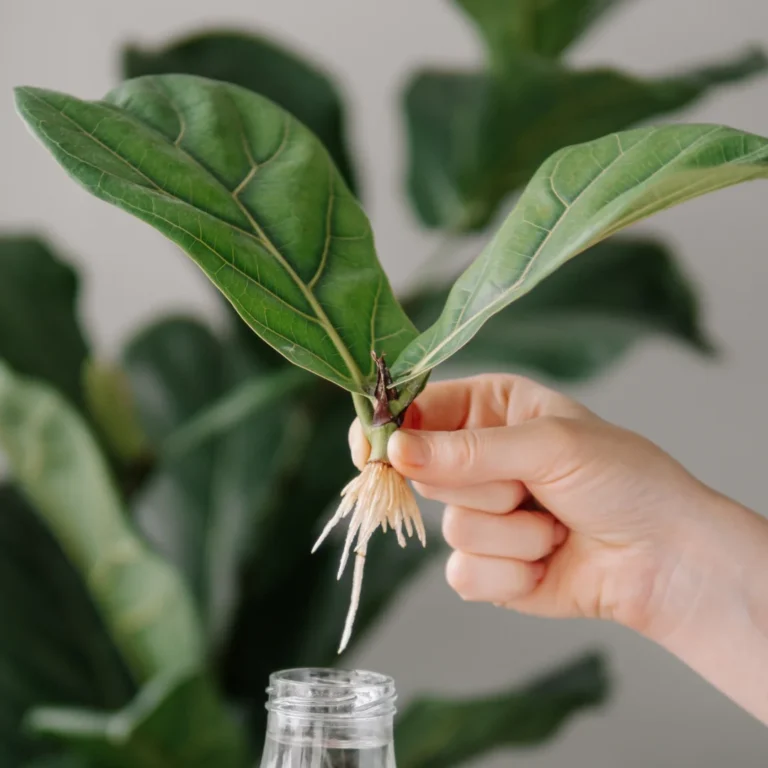
Tips for Fiddle Leaf Fig
- Rotate the plant at least once in two weeks so that all the leaves get the optimal light.
- Wipe the leaves once a week.
- Put fertilizer during its growing period.



